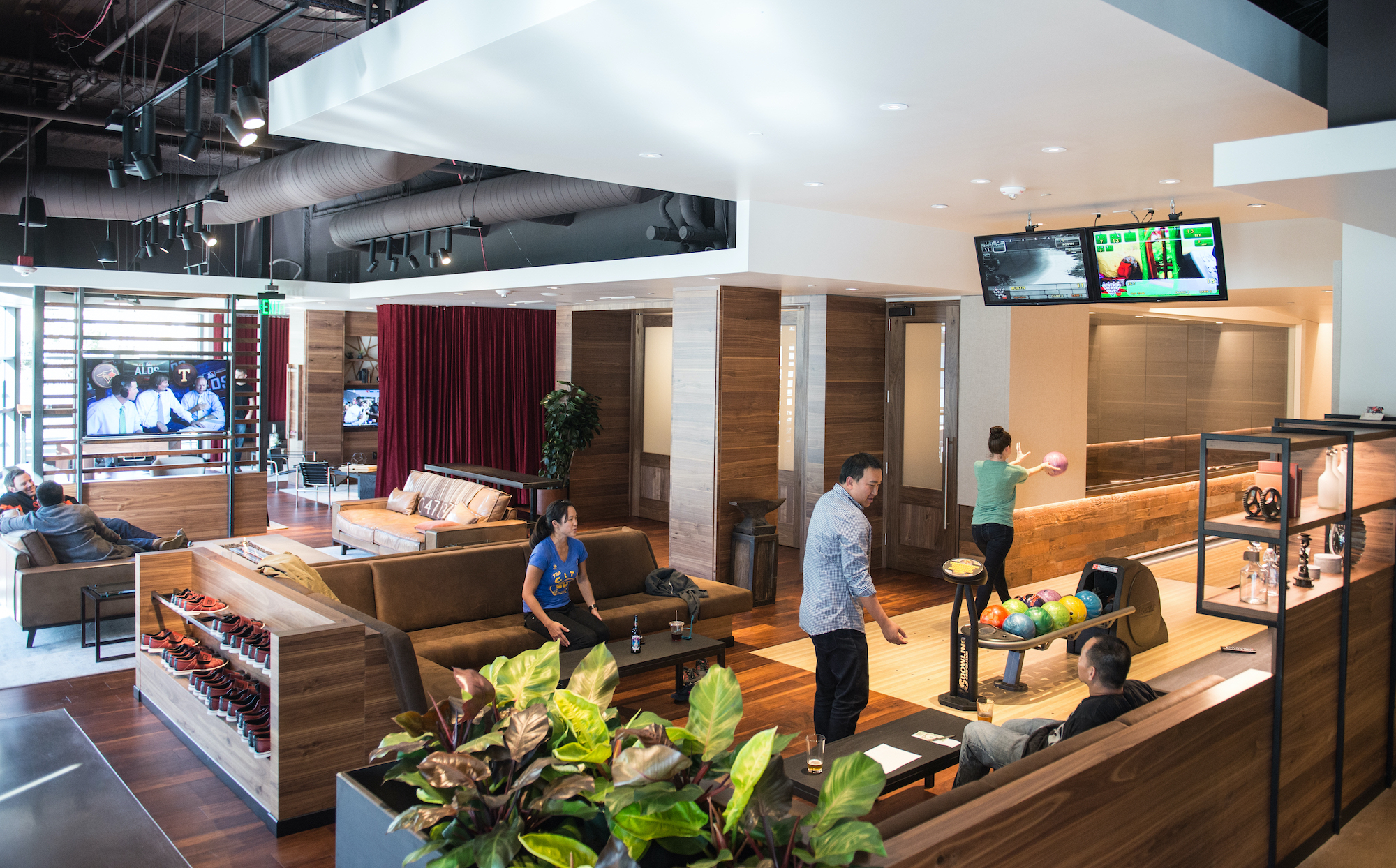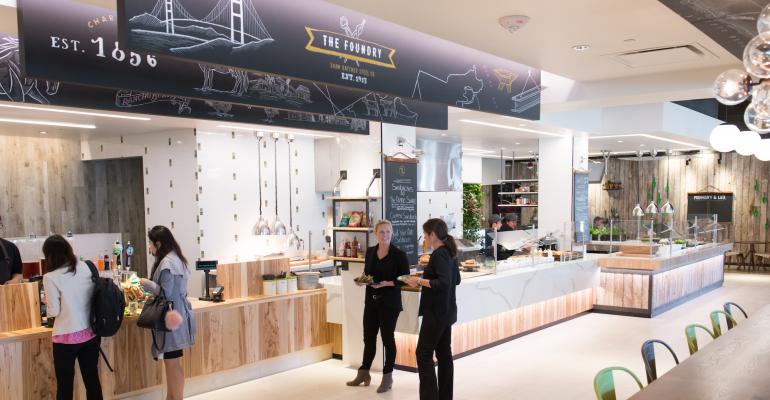While large single-tenant corporate facilities and campuses struggle with getting employees back to offices more or less full time in the face of the remote work trend, smaller businesses in multi-tenant locations have an additional challenge in that they don’t necessarily control some of the onsite amenities—like dining—that might be an effective incentive for return-to-work.
Bon Appetit Management Co. has developed one solution—high-end public restaurants and event spaces located in multi-tenant business locations that are a step above either the typical business cafeteria or even the traditional restaurant located in an office building.
The restaurants—of which the latest is the recently opened Anecdote in South San Francisco’s Kilroy Oyster Point, one of the largest life science developments in the United States—offer premium dining, spectacular venues, extensive event spaces, multiple socialization activities, high-tech convenience and even added services like the fitness center at the Traverse location in South San Francisco.
 Photo: Anecdote recently opened in South San Francisco’s Kilroy Oyster Point development, one of the largest life science developments in the United States.
Photo: Anecdote recently opened in South San Francisco’s Kilroy Oyster Point development, one of the largest life science developments in the United States.
Credit: Aubrie Pick
“It’s what I would call an amenity restaurant,” offers Bon Appetit District Manager Alison Harper. “They are there to provide an amenity for multi-tenant campuses.”
The concept offers a solution in environments where the amenity is desirable but impractical, Harper suggests.
“Especially in life sciences or bio-tech, they tend to have a smaller footprint with fewer people, so while a lot of these companies have the resources to provide food [and other amenities] to their employees, it doesn’t necessarily make sense to build a gym or an onsite food program,” she explains. “What we found on these multi-tenant campuses is that real estate companies are enticing tenants by providing the kind of amenities you might find at a Google or LinkedIn, where they have an onsite gym that all the tenants can use or a restaurant they can go to.”
While Bon Appetit started working on the concept five to six years ago (i.e., before COVID), “post-COVID is when it really boomed, and what we find now is that as companies are returning to work, it has taken on a second life,” Harper says. “What was a nice-to-have that would drive occupancy before is now something tenants—the people renting out the spaces on the campuses—are really wanting because now I think it makes even less sense for a medium-sized company to provide an onsite food program if their employees are only showing up three days a week—and they don’t even know which days.”
One result is a trend toward companies being more willing to subsidize employee dining in the off-site restaurants, Harper notes. “Instead of them providing the food [themselves], they get them a discount, or they pay for their meal. This is something we’ve seen increase since the pandemic and since people returned to work.”
Also, because unlike on onsite company cafeteria that has fixed costs independent of actual usage, the cost to companies of using the restaurants as a subsidized amenity is limited to what is actually purchased, Harper adds. Meanwhile, because of its location in a multi-tenant cluster, the restaurant can draw from multiple customer bases as well as from street traffic walk-ins as they are open to the public, giving the operation both a broader potential revenue stream and also a role as a community asset.

Bulgogi tofu tacos served at Lighthouse.
With sustainability issues a major longtime emphasis for Bon Appetit, it’s no surprise that its amenity restaurant concepts all incorporate values such as local sourcing, waste reduction and energy conservation. For instance, Lighthouse in South San Francisco not only sources at least 50% of its ingredients from small farms, ranches and food artisans within 150 miles but is in a LEED and Fitwel certified solar-powered building that targets Zero Net Energy within its first year of operation. It has an all-electric solar-powered kitchen and a plant-forward menu with no beef or tropical fruits and minimal dairy.

An acorn squash salad served at Lighthouse.
While the South San Francisco area is a hotbed hosting a number of these concepts due to its high concentration of life science firms, the program is expanding to Southern California, Boston, Austin and any other market with a concentration of the kind of highly specialized firms that would be open to such an amenity, which not only addresses the workplace dining issue but provides an inviting socialization platform.
“We wanted to make these spaces really friendly for people to gather with their co-workers after work,” Harper says. “Also, companies like to host happy hours and lunches so it’s important that these spaces be conducive to allowing people to do that.”
Meanwhile, there is also a need to provide the latest in convenience services like mobile ordering, she adds.

In addition to a modern café and casual dining room, Foundry & Lux offers a lounge with activities like bowling, bocce, ping pong and even a pool.
“While these places need to look and feel like restaurants, in many ways they also need to function like a corporate café—you need to get in, you need to get out, you need to be able to eat something different every day, and you need to be able to get it done in about a half an hour,” Harper explains. “Mobile ordering not only allows people to order ahead from their office, but we’ve also set it up so that they can apply their subsidy discount to what they order, so they have all the convenience of that without having to walk up to a register and swipe or show their badge. I think that helps drive a lot of the participation.”
She cites Foundry & Lux, located like Anecdote in South San Francisco’s Oyster Point neighborhood, as an example of a combination of platforms for maximum flexibility, with its coffee bar offering casual spaces for relaxing or working in a “third place” atmosphere, its quick service café for those desiring a meal on the go and its bar lounge with table service for more formal dining.
“That restaurant in particular has been really successful with these planned spaces in allowing people to have different experiences,” she offers.

